The Claim:
A tomb was uncovered on March 28, 1980, a construction crew developing an apartment complex in Talpiot (Jerusalem) uncovered a tomb which archaeologists from the Israeli Antiquities Authority excavated shortly thereafter. Archaeologist Shimon Gibson surveyed the site and drew a layout plan. Scholar L.Y. Rahmani later published “A Catalogue of Jewish Ossuaries” that described 10 ossuaries, or limestone bone boxes, found in the tomb. Many of the ossuaries originally contained bones, but as part of the cultural and legal tradition of the land, these bones were removed and reburied. It is important to note that there are NO bones in any of the ossuaries under question. Interestingly, the ossuaries that are most contested (those containing names similar to the Biblical family of Jesus) were already empty and had been vandalized in antiquity according to the first archeologists at the scene. The 10 ossuaries were then taken to the Rockefeller Archaeological Museum outside the Old City of Jerusalem. Nine were catalogued and stored but the tenth was apparently left outside in a courtyard. This tenth ossuary has subsequently gone missing.
The discovery made the press on several occasions over the years, taking its most ambitious form in a 2007 documentary called “The Lost Tomb of Jesus,” from executive producer James Cameron and director Simcha Jacobovici.
From the Discovery.com web site:
New scientific evidence, including DNA analysis conducted at one of the world’s foremost molecular genetics laboratories, as well as studies by leading scholars, suggests a 2,000-year-old Jerusalem tomb could have once held the remains of Jesus of Nazareth and his family. The findings also suggest that Jesus and Mary Magdalene might have produced a son named Judah.
If this tomb is actually the family tomb of Jesus, then everything that we believe as Christians has to be reconsidered. Did Jesus really resurrect from the grave? Did he really ascend into heaven? These foundational truths are called into question if we can actually demonstrate that the Talpiot Tomb is the true resting place of Jesus of Nazareth. For this reason, it is important for us to examine the claims being made by the filmmakers. As with any claim of truth, it’s important for us to think critically and calmly as we examine both the case FOR and AGAINST the claim. So let’s do our best to begin this journey together, looking at all the evidence that is being offered on both sides of the claim.
Evidence in SUPPORT of the Claim:
Let’s begin by looking at the best evidence that is offered by the filmmakers in an attempt to make the case that the Talpiot Tomb contains the ossuary of Jesus and the Holy Family.
The Location of the Tomb
The Talpiot Tomb is located in Jerusalem and its contents have been dated back to the Second Temple Period, indicating that the tomb is set in the time and place that the filmmakers would expect it to be if it were, in fact the tomb of the Holy Family.
The Inscribed Names
Five of the 10 discovered boxes in the Talpiot tomb were inscribed with names that are similar (although not exact) to characters from the Biblical narrative. The documentary claims that at least four leading epigraphers have corroborated the ossuary inscriptions. The inscriptions include the following titles:
-
- “Yehoshua bar Yosef” (interpreted here as Aramaic for ‘Jesus Son of Joseph’)
- “Miriam” (the filmmakers argue that this is “Maria” in Latin, the same name that is later translated as “Mary” in English)
- “Mati” (interpreted as the original Hebrew word for ‘Matthew’)
- “Mariamene e Mara” (the claim here is that this is Greek for “Mary known as the master.” Francois Bovon, professor of the history of religion at Harvard University, claims that this was probably the actual name given to Mary Magdalene)
- “Yehuda bar Yehsu” (interpreted here as Aramaic for “Judah Son of Jesus”)
- “Yoffe” (interpreted as Aramaic for “Joseph”, is either Joseph (husband of Mary) or his son)
The Statistical Probability
In addition to this, Andrey Feuerverger, professor of statistics and mathematics at the University of Toronto, attempted to make the case stronger by conducting a statistical analysis of the probabilities that these names could be present in the tomb and NOT be the family of Jesus. He first tried to determine how many times each name was used in a tomb of this type in this area of the world in the first century. Then he multiplied the instances that each name appeared during this time period with the instances of every other name. He claims that he found that “Jesus Son of Joseph” appeared once out of 190 times, and Mariamne appeared once out of 160 times. He then divided the resulting numbers by 25 percent, (as a statistical standard) and went so far as to divide the results again by 1,000 to attempt to account for what he believed to be all possible tombs — even those that have not yet been uncovered — that could have existed in first century Jerusalem. He concluded that the odds are at least 600 to 1 in favor of the Talpiot Tomb being the Jesus Family Tomb.
The DNA Analysis
A DNA analysis was done on two sets of samples from the ossuaries. First, DNA was examined from tiny bits of matter taken from the “Jesus Son of Joseph” and “Mariamene e Mara” ossuaries. Secondly, DNA was examined from the patina (a chemical film encrustation) on one of the limestone boxes.
Human Remains
These were analyzed by Carney Matheson (Paleo-DNA Laboratory at Lakehead University in Ontario, Canada). A mitochondrial DNA examination was completed, and Matheson determined that the matter from the ‘Jesus’ ossuary and the mater from the ‘Mary Magdalene’ were not maternally related. Based on the fact that tombs from this time and place usually contain people who are either related by blood or marriage, Jacobovici and his team default to the position that the two people in these ossuaries were married. Jacobovici then proposed that the “Judah,” ossuary contains the son of these two people, although no DNA work was reportedly done on this ossuary.
Jacobovici postulates that this Jesus is Jesus Christ himself and that this Judah is Jesus’ son. In doing this, he overcomes the lack of ANY canonical or non-canonical historical evidence for the idea that Jesus had a son. There is no document in the Bible or outside the Bible that makes this claim. Jacobovici points to the Gospel of John and speculates that Judah could have been the “lad” described as sleeping in Jesus’ lap at the Last Supper.
Patina Examination
The Patina was examined by Robert Genna, (director of the Suffolk County Crime Laboratory in New York), and he claims that the patina taken from the Talpiot Tomb and patina taken from the “James” ossuary are a match. The famous James ossuary was discovered around 1980. It disappeared for a period of time and then reappeared in the antiquities market. It was marketed as evidence that Jesus actually lived, and was inscribed as the ossuary of “James, the brother of Jesus”. Genna said that, “the samples were consistent with each other.” In addition to this, the filmmakers maintain that there is a space in the Jesus Family Tomb that would be consistent with the placement of this ossuary. In essence, they are claiming that the Ossuary came from this tomb and is further evidence linking Jesus to the tomb.
An Additional Tomb
The researchers also claim to have discovered an additional tomb approximately 66 feet away from the first tomb in Talpiot. The team speculates that this second tomb could contain the remains of other disciples or family members, but this tomb has NOT been examined in any way.
It is on the basis of this evidence that the “The Lost Tomb of Jesus” makes the claim that the ossuaries belong to Jesus and the Holy Family. These are the strongest pieces of evidence offered by the filmmakers. Now let’s take a look at the evidence with a critical eye…
Evidence NEGATING the Claim
In the midst of the media interest in the claims of the filmmakers, it’s important for us to realize that there is really nothing in the Talpiot Tomb that warrants the frenzy. We can calmly examine the evidence and place it in its proper perspective. Let’s take a look:
The Truth About the Original Discovery
Before we get to the specific claims of the filmmakers, let’s be clear about something. The evidence and facts presented in “The Lost Tomb of Jesus” are old news:
There’s Nothing New
The tomb was discovered years ago and has already undergone scrutiny by the archeological community who do not consider it to be the family tomb of Jesus. There is nothing new here. Scholars and archeologists have been looking at the contents of the tomb since 1980. There has never been a cover-up. The contents of the tomb have simply been unimpressive to the experts who know the context and history of the area. In addition, the BBC did a documentary on this subject in 1996 and James Tabor wrote a book, The Jesus Dynasty, that also tried to sensationalize the tomb. The facts surrounding the tomb have been long established and examined.
The Truth About the Location of the Tomb
The filmmakers are positing the claim that the location of the tomb is consistent with what we would expect if we were to look for the burial place of the Holy Family. But is this really so?
The Burial Site Would Not Be in Jerusalem
Archeologists, historians and Biblical scholars recognize that the historic site of the Church of the Holy Sepulcher in Jerusalem’s Old City is the tomb in which Jesus spent three days prior to the resurrection. This is supported by historical, religious and archeological evidence. The burial site identified in Cameron’s documentary is in a southern Jerusalem neighborhood, nowhere near this church. Remember that there is NO tradition, either Christian, Jewish or pagan, that suggests that ANY member of the Holy Family was buried in Jerusalem.
If Mary and Joseph DID have a tomb, what makes us think it would be in Jerusalem in the first place? They came from Galilee. Joseph’s ancestral home was Bethlehem, and his adult home was Nazareth. It also appears from the scripture and the early tradition of the Church that his family was alive in Nazareth long after his death. Joseph appears to have been the first to die. So why would his family carry him back to Jerusalem and put him in a tomb (alone) when this was not his home?
But beyond this, there is a unanimous and strong tradition within Christianity (supported by Eusebius) that Mary actually died in Ephesus, where the apostle John (faithful to the promise he made to Jesus at the foot of the cross) took care of her.
The Truth About the Inscribed Names
Now let’s take some time to look at the names that have been discovered on the ossuaries. Let’s look carefully at the names that are listed and the names that are missing:
The Names Alone Don’t Prove Anything
Archeological scholars and historians agree that the names found on the ossuaries are extremely common for the first century. They are not surprised to find them in such a tomb. Archaeologist Zvi Greenhut of the Israel Antiquities Authority said that the combination of the names Jesus, Mary and Joseph on the ossuaries did not impress archaeologists at the time, and as experts in this field, they saw no reason to draw the conclusions of the filmmakers. He said, ”The names are common names. There is nothing unique in the appearance of all names together.” He said that among the 1,000 ossuaries from biblical times unearthed in Jerusalem by 1996, six carried the inscription ”Yeshua,” or Jesus. Of those, two were engraved with the words ”Jesus, son of Joseph.” In addition to this, Greenhut said that about 25 percent of the women’s caskets bore some form of the name Mary and that Joseph was the second most common man’s name of the period.
In addition, Tal Ham (one of Israel’s foremost experts on Jewish and early Christian history) has collected all the names that appear on ossuaries, on papyrus inscriptions and on other written documents from the 2nd century BC to about the 2nd century AD. It is a VERY complete work and catalogue. Ham says that “Mary is the most common name for women. Joseph is the second most common name for men, after Simon. Jesus is also one of those very typical names. So I would say the chance that this is the cave tomb of Jesus of Nazareth and his family is not very likely.”
There Are Too Many Unknown Ossuaries in the Tomb
Ten ossuaries were discovered in the tomb, yet only five had names that can be recognized from the Biblical narrative. That means that HALF of the ossuaries do NOT fit the narrative. In addition, there is one ossuary that is marked as ‘Judah, son of Jesus’. While the documentary seems to imply that this VALIDATES the tomb, it certainly does NOT accomplish this if we are trying to match the idea of Jesus having a son with anything in the Biblical text. Instead, this would be a piece of evidence that eliminates the tomb as belong to Jesus’ family.
Why is there someone named “Matthew” in the tomb with this immediate family? The filmmakers claim that this is a family tomb. That would be consistent with the archeological evidence from the time. Yet we know that Joseph had no recorded son with this name. The presence of this name in the ossuary list actually works AGAINST the probability of this being the family tomb of the Holy Family. If disciples were also to be included in this tomb, where are the other ten or eleven? And how do we dismiss the historical evidence and tradition of the diverse locations of the apostles’ deaths? There is a strong tradition in the early church, for example, that indicates that Matthew traveled to Ethiopia and was martyred in either Egypt or Parthia. The presence of someone named Matthew in the Talpiot Tomb does NOT add credence to the possibility this is the family tomb of Jesus.
Do We Even Have the Right Names?
It’s important to recognize that the filmmakers are doing their best to interpret the inscribed names in a fashion that amplifies their argument, even when this may not make sense of the inscriptions. For example, they argue that “Maria” is the Latin form of “Mary”, and that this Latin version of her name makes sense on the ossuary because this is how Jesus’ mother was known to early Roman followers. But this ignores the fact that Jerusalem was filled with Jews in the pre-revolt context of the city prior to 70AD. Why would she be known by a Latin derivative?
Linguists are also skeptical about the names identified in the documentary. Stephen Pfann, a biblical scholar at the University of the Holy Land in Jerusalem does not believe that the name for ‘Jesus” has been read correctly. He believes it would be more accurately translated as the name ‘Hanun’ This is because it is widely accepted that ancient Semitic script is very difficult to decipher and translate. The broad variety of languages being cited in the inscriptions should make us suspicious at the very least. The filmmakers seem to use whatever language best suits their argument. One version of “Mary” is seen through a Latin filter, while the other is seen through a Greek filter in order to make their case. If both names are read from the SAME language filter, the argument begins to fall apart. But why would so many languages be found in a tomb that is supposed to hold members of the same family? And remember that when Jacobovici claims that the “Mariamene” inscription refers to “Mary Magdalene” he is making a huge assumption that has NO foundation in the historical or linguistic evidence.
There is also the distinct possibility that the inscriptions are either forgeries or misinterpreted. There is no way to authenticate them. In a similar event, a cave tomb of ossuaries was discovered in 1945. These ossuaries also had Hebrew and Greek inscriptions and they were initially believed to be lamentations by Jewish disciples of Jesus responding to his crucifixion. But once these inscriptions were subjected to greater scrutiny, they lost their integrity and authenticity. When originally catalogued, the Jesus related inscription from the “Jesus Tomb” was described:
“difficult to read, as the incisions are clumsily carved and badly scratched” “Yeshua son of Yohosef”
How are we to know that this is not a late addition to the ossuary, or has simply been mistranslated? The names inscribed on the ossuaries each have a number of alternative translations that can possibly be made in the translation process. While the filmmakers have chosen to translate them in a fashion that best makes their case, this simply ignores the other possible translations altogether.
The Truth About the Statistical Probability
Now let’s turn to another key piece of evidence offered by the filmmakers. Is their statistical reckoning reasonable?
The Statistical Foundation is Too Small
The statistical calculations used by the filmmakers to “prove” this is the tomb of Jesus make several broad assumptions and uses limited initial numbers to make the case. Remember that statistics begin with numbers. If the numbers going IN are not legitimate, then the statistical ‘proof’ coming OUT will be no more legitimate. Andrey Feuerverger begins with very limited data. He only considers the title “Jesus son of Joseph” when he considers the probabilities. But why limit the count in this way? Remember that the earliest followers of Jesus NEVER used this title to describe him. Why would we think for a minute that this would be the title inscribed on an ossuary used for Jesus? In fact, to limit the statistical data base to this title, exposes the simple desire of the statistician to link the ossuaries together (well after the fact) to make a case that this is the Holy Family. If we are going to be fair about the statistical calculations, we really have to use ALL inscriptions that bear the name “Jesus”. Of course, once we do this, the probabilities don’t work for the filmmakers. Jesus was just too common a name.
But it is fair to open the database very wide here. Remember that Jesus and his family were NOT wealthy. And the wealthy show up in inscriptions and other documents FAR more than the poor. How many additional poor Jesus, Joseph’s and Mary’s existed in addition to the inscriptions found on the tombs of the wealthy? It’s impossible to know, but safe to imagine that there were MANY more that never made it into the statistical database. In addition to this, how many tombs are yet to be discovered that might also add to the database? This is another fact that is impossible to know with certainty, and adding a simple statistical percentage to the numbers does NOT solve the problem here (as the filmmakers would like us to believe).
The Truth About the DNA Analysis
As we look at the DNA evidence in the case, let’s try to remember that the strongest and most compelling use of DNA evidence is when it is used to connect an unknown variable with a known constant…
This DNA Evidence Doesn’t Prove Much
Of course, one of the most compelling pieces of evidence in the ossuaries would have been the BONES of the people who were buried. These bones would have been incredibly helpful in identifying the person that the filmmakers are now trying to identify as Jesus. The marks of the crucifixion would certainly be prominent on the bones, wouldn’t they? But there are NO bones in the ossuaries. So, the filmmakers had no option but to try to make the most of a bad situation. Unfortunately, the resulting DNA analysis here is less than compelling. Remember, the most compelling use of DNA evidence is when it is used in a COMPARISON that attempts to match a KNOWN sample source. In other words, DNA can act like a fingerprint to identify someone IF we have a sample on file that we know belongs to the suspect. IF we have the DNA of a suspect on file, we can match that DNA to DNA evidence found at a crime scene. But there’s a problem with the way that DNA was used in the case of the Talpiot Tomb. We simply don’t have a sample of Jesus’ DNA to begin with! In addition, there is no existing DNA from the Holy Family with which to compare to the DNA from the ossuaries. Without such samples available to us, nothing conclusive about the identity of Jesus can be learned from ANY DNA work. In addition, the DNA used in the film was not extracted from bones within the ossuary but from unidentified ‘matter’. There is no way to even know if this DNA belonged to anyone in the ossuary.
The next best thing DNA can demonstrate for us is whether or not there is a family relationship between people in the ossuaries. But how compelling is that? After all, we would expect to find SOME sort of family relationship if this is, indeed, a family tomb from the first century. But what does that prove? Regardless, the DNA evidence uncovered by the filmmakers doesn’t even find a family relationship! The only thing the DNA seems to suggest is that the person identified as “Jesus” is NOT related to the person now being identified as “Mary Magdalene”. Rather than connect them as mother and son, they are left having to explain them as man and wife. Does this help to identify this particular Jesus as the Jesus of Nazareth? Not really. After all, there is nothing in the Biblical narrative that suggests that Mary Magdalene was ever married to Jesus.
This notion of Jesus being married to Mary Magdalene comes purely from late non-canonical Gnostic Gospels: the Gospel of Philip and the Gospel of Mary Magdalene. Let’s start by looking at the Gospel of Philip. Scholars recognize that this Gospel shares many common characteristics of other heretical late Gnostic writings. Wesley W. Isenberg, the man who originally translated the Gospel, dates it as late as the second half of the 3rd century although the earliest known manuscript is dated in the 14th century. It was most likely written in Syria (based on the use of language). Ian Wilson (who wrote the book, “Jesus: The Evidence) describes the late Gospel of Philip as “merely a Mills and Boon-style fantasy of a type not uncommon among Christian apocryphal literature of the third and fourth centuries.” But even though this is the case, many non-believers have tried to make the claim that this Gospel describes Jesus and Mary Magdalene as husband and wife based on a partial verse from the text (note that missing words have been added in parentheses):
And the companion of [the saviour was] Mary Magdalene. [Christ loved] her more than [all] the disciples, [and used to] kiss her [often] on her [mouth? face? cheek? head?]. The rest of [the disciples were offended by it and expressed disapproval]. They said to him “Why do you love her more than all of us?” The Saviour answered and said to them, “Why do I not love you like her? When a blind man and one who sees are both together in darkness, they are no different from one another. When the light comes, then he who sees will see the light, and he who is blind will remain in darkness.”
This passage is the only passage in the Gospel of Philip that even comes close to describing Jesus and Mary as husband and wife, and it still stops short of making that claim! In order to see a marital relationship between Jesus and Mary Magdalene as something that PROVES that the Talpiot Tomb is the tomb of the Holy Family, we have to ignore the huge number of canonical and non-canonical Gospels that never so much as hint at this relationship, and instead adopt the scant and unreliable evidence of the Gospel of Philip (a late Gnostic fantasy), as though it alone is true.
But the Gospel of Philip narrative actually does nothing to help identify the “Mariamne” found in the tomb as Mary Magdalene. In fact, it seems to do just the opposite. The Gospel of Philip NEVER identifies Marianme as Mary Magdalene, and it also tells us that this Marianme dies in the Jordan river and that, when threatened, she turned into either a glass box or a cloud of fire.
Now let’s take a quick look at the Gospel of Mary Magdalene. This is also a Gnostic Gospel and much of it is missing. While there is a character named Mary in the account, she is NOT specifically identified as Mary Magdalene. It was written in a Coptic dialect and has been dated very late (3rd to 5th century), so it is NOT near the life of Jesus in either time or location. There is one passage from which conspiracy theorists typically draw the conclusion that Jesus was married to Mary Magdalene. In a passage in which Mary is trying to legitimize what she is about to say to the other disciples (in Chapter five verse five), Peter reportedly makes this comment:
“Peter said to Mary, Sister we know that the Savior loved you more than the rest of woman.”
That’s it. Once again the Gospel of Mary stops FAR short of making the claim that Jesus and Mary were married. Like the Gospel of Philip, this is a VERY poor and late source of information, and purely a work of fiction.
The long and short of it is this: there is no evidence from any ancient document, either Christian, Jewish or pagan, canonical or non-canonical, that describes Jesus and Mary as being married (let alone having a child together). This idea cannot, therefore, be used to authenticate the Talpiot Tomb. It is not a pre-existing truth that is confirmed by the tomb, it is simply a wild conclusion drawn FROM the tomb in order to explain the presence of a second “Mary”. To cherry pick from ancient Gnostic texts to try to make sense of the presence of Marianme in the Talpiot Tomb is irrational. In fact, the presence of the additional “Mary” in the tomb actually adds to the argument that this CANNOT be the burial place of the Holy Family. There is no other Mary in the inner circle of the Holy Family aside form Mary, the mother of Jesus.
The DNA Evidence Doesn’t Go Far Enough
So much more could have been done with the DNA evidence here. After all, they are trying to make a link between key people in the tomb to make their case. Why was there no DNA comparison made (or perhaps found) between the OTHER Mary and the Jesus of the tomb? Shouldn’t SHE then be his mother if the first Mary is not? In addition, why was there no comparison made (or perhaps found) between the person the filmmakers are identifying as Mary Magdalene and the body they are trying to claim is her son Judah? There should also be a maternal connection here that could be established if we are to believe that this Mary is actually married to Jesus and together they gave birth to this person identified as Judah. When questioned about why this second set of tests were NOT performed, James Cameron (interviewed by Larry King) said that the tests are expensive and that his production company did NOT have unlimited resources. One can’t help but wonder how much was spent on the promotion of this film. Couldn’t some of that money have been spent on the DNA work to legitimize the analysis? It certainly seems like the testing stopped when it jeopardized the likelihood of finding something that would shake the theory of the film. After all, if they could find NO maternal relationship at all in this set of ossuaries, there wouldn’t be much to write about here. The theory would end at this level of testing. At this point, there is NO DNA evidence indicating that the person named “Judah” has any biological relationship to anyone else in the tomb.
And let’s take this opportunity to discuss this notion that the person identified as Judah is actually the son of Jesus and Mary. Clearly there is no DNA evidence to make this case. So on what basis is the case being made? It is not on the basis of the early heretical and non-canonical fictions called the Gnostic Gospels. They don’t mention a son at all. Instead the filmmakers are basing their claim on the contents of the Gospel of John! They point to two passage of the Gospel of John to suggest that there is actually a ‘hidden’ son of Jesus ever-present in the narrative, overlooked for centuries by those who have been reading the clear narrative of John’s eyewitness testimony. They first point to the Last Supper and try to identify the disciple that “Jesus loved” as his own young son:
John 13:23
There was reclining on Jesus’ breast one of His disciples, whom Jesus loved.
This has always been understood as referring to John himself (the youngest of the disciples) and there is nothing in this one line of scripture to suggest that Jesus has a son in the room. In addition to this passage, the filmmakers point to the scene at the cross to suggest that Mary Magdalene and her son Judah are actually standing there when Jesus is crucified.
John 19:25-27
But there were standing by the cross of Jesus His mother, and His mother’s sister, Mary the wife of Clopas, and Mary Magdalene. When Jesus therefore saw His mother, and the disciple whom He loved standing nearby, He said to His mother, “Woman, behold, your son!” Then He said to the disciple, “Behold, your mother!” And from that hour the disciple took her into his own household.
This passage is abundantly clear. Jesus looks down at his mother and in an act of stewardship and compassion (knowing that her husband Joseph was already dead) Jesus entrusts the future care of Mary to the Apostle John (the man who is consistently refereed to in the Gospel of John as the man whom “Jesus loved”). This is consistent with other references to John in the Gospel and with the early church History related to the final resting place of Mary with John in Ephesus.
But the filmmakers see the passage in an entirely different way. They argue that Jesus is actually addressing Mary Magdalene and talking about their son Judah who is standing at her side. Now think about this for a minute. Which of the two possibilities makes more sense? (1) Jesus is taking the time, as he is hanging on the cross, to state the obvious to his wife and son (‘You two are mother and son!”) Duh. Or (2) Jesus is taking the time while hanging on the cross (and with little time left), to define a NEW reality for his OWN mother and the Apostle John. With time running out, it makes FAR more sense to render the passage just as Christians have for two thousand years. And this is also consistent with the statement, “And from that hour the disciple took her into his own household” (In fact it is the ONLY scenario that makes sense of the statement)
The Missing Ossuary is Not the “James” Ossuary
The filmmakers claim that the missing ossuary from the tomb is the famed “James” Ossuary that surfaced several years ago. They would like to make this connection because, of course, this places yet another name of the Holy Family in the Talpiot Tomb. Remember, however, that when they make this claim they are embracing an artifact that is still hotly debated. Atheists and non-believers have argued that the James Ossuary is a fake for some time now, prior to wanting to use it to legitimize the Talpiot Tomb.
Oded Golan, the antiquities dealer who originally presented the James Ossuary, claimed that it came from Silwan (not Talpiot). Tests were performed that discovered that the soil on the Ossuary matched soil from Silwan. The Talpiot Ossuaries come from a rock cave in a very different location. It is a stretch to assume that the James Ossuary came from the Talpiot Tomb without first knowing if the Patina encrustment is not common to MANY ossuaries of the time. In order to know that, we would have to perform the patina signature test on all ossuaries catalogued so far to see if this might possibly be the case.
The filmmakers invented the process they are calling ‘patina fingerprinting’ in order to make their case. Jacobovici invented this process along with his co-author Charles Pellegrino. In essence, the process simply compares the mineral content of shards from the Talpiot ossuaries with shards from the James ossuary. Jacobovici and Pellegrino looked at these mineral deposits under a microscope with the help of a crime scene specialist and claim to observe a ‘match’. But this is NOT compelling evidence unless we can FIRST show that patina deposits ARE, in fact, like fingerprints (UNIQUE to their source). There is absolutely NO evidence that this is the case. Until that truth can be demonstrated, ‘patina fingerprinting’ is a convenient term, but absolutely undemonstrated.
And there are also reasonable, evidential and historical reasons to doubt that the James Ossuary is authentic in the first place. Dan Bahat, an archaeologist at Bar-Ilan University, said that it is irrational to think that the James Ossuary (which he and many other experts consider to be a forgery) is related to the ossuaries that were discovered in the “Jesus Tomb”. He said, “I don’t think the James Ossuary came from the same cave. If it were found there, the man who made the forgery would have taken something better. He would have taken Jesus.”
In addition to this, the inscription on the James Ossuary that indicates that it belongs to James, brother of Jesus has always been challenged as a late addition and a fraud. In fact Oded Golan was actually tried for fraud in Jerusalem, on the claim that he forged the inscription. As part of this trial, Former FBI agent Gerald Richard examined a photo of the James Ossuary (that depicted the ossuary sitting in Golan’s home) and testified that FBI testing indicated the photo was taken in the 1970’s, contradicting the claim that it could have been found in 1980 at the time of the Talpiot Ossuary discovery.
And the early Church history would not place James’ tomb anywhere near Talpiot in the first place. Eusebius wrote that the location of James burial spot was very near the place where he was martyred (near the temple mount), and this is nowhere near the Talpiot Tomb. Eusebius went on to describe that James’ tomb was marked by a stele and was a traditional pilgrimage spot for the early church. Here is what he wrote in his early church history:
“(James) was buried on the spot, by the Sanctuary, and his inscribed stone (stele) is still there by the sanctuary.” (Hist. Eccles. 2.23.18).
It was described as a single tomb with no other family members mentioned at all. Early Christians made a pilgrimage trek to this tomb every year, considering the bones of James to be a sacred relic. (Of course they would NOT have felt this way about the ‘bones’ of Jesus in a tomb in Talpiot.) This recognized location for the tomb of James near the temple mount directly contradicts the claims of the filmmakers. If the filmmakers are right, then Jesus would have been buried in Talpiot years before James ever died and somehow the family would have secretly returned James to this tomb, without anyone realizing that the tomb by the Temple Mount was no longer occupied, contradicting the recorded history of the James Tomb.
So What Are We to Believe?
While the “Lost Tomb of Jesus” will certainly appeal to many people who are not familiar with the facts surrounding the tomb discovery and the rich substantiated history of the Gospel narrative, even a cursory examination of the facts demonstrates the weaknesses in the claims of the filmmakers. Many experts have examined the evidence presented in the film and denounced the findings as ludicrous:
The Original Archeologists Don’t Believe It Is the Holy Family
The original archeologists and experts who DISCOVERED the tomb were NOT impressed by the find.
Dr. Shimon Gibson, who was one of the first people to examine the ossuaries 27 years ago
“Entering the tomb in 1980 I didn’t imagine this would become such an international focus. These are typical stone caskets from the first century. There are a lot of aspects that need to be looked at. A lot of new research has to be done. I’m skeptical.”
Amos Kloner, Bar-Ilan University Professor and the first archaeologist to examine the site
“They (the producers of the film) just want to get money for it. It was an ordinary middle-class Jerusalem burial cave. The names on the caskets are the most common names found among Jews at the time…It is just a chance… I think the possibility of it being Jesus’ family very close to zero. The family of Jesus coming from Nazareth is a family of limited generations. The cave we are talking about was used by a family, even a wealthy family, for several generations.”
“The family of Jesus and James had no burial cave in first century Jerusalem and it is known that about a generation elapsed between the death of Jesus and that of James. It is not known from the details of their lives that the family moved from Nazareth to Jerusalem. It is thus not likely that in the space of thirty years the burial of a large family related to Jesus and his brother James developed in Jerusalem, that made it necessary to write the deceased’s name on the ossuary in order to distinguish him from others.”
“It makes a great story for a TV film… but it’s impossible. It’s nonsense…There is no likelihood that Jesus and his relatives had a family tomb. They were a Galilee family with no ties in Jerusalem. The Talpiot tomb belonged to a middle-class family from the 1st century CE.”
Joe Zias, (Curator for anthropology and archeology at the Rockefeller Museum in Jerusalem from 1972 to 1997, and the man who personally numbered the Talpiot ossuaries)
“Simcha (Jacobovici ) has no credibility whatsoever. He’s pimping off the Bible … He got this guy Cameron, who made ‘Titanic’ or something like that—what does this guy know about archeology? I am an archeologist, but if I were to write a book about brain surgery, you would say, ‘Who is this guy?’ People want signs and wonders. Projects like these make a mockery of the archeological profession.”
Archeological Experts and Scholars Feel the Same Way
Additional renowned archeologists and scholars also find little evidence to support the claim:
Stephen Pfann, a biblical scholar at the University of the Holy Land in Jerusalem, and one of the scholars interviewed for the documentary
“I don’t think that Christians are going to buy into this. But skeptics, in general, would like to see something that pokes holes into the story that so many people hold dear. How possible is it? On a scale of one through ten, with ten being completely possible, it’s probably a one, maybe a one and a half.
Motti Neiger, spokesman of the Israel Antiquities Authority
“Well, it’s a nice news story for Easter, but the archeological evidence shows that chances of these being the actual burials of the holy family are almost nil.’”
L.Y. Rahmanim, Israeli archeologist who has catalogued more than 1,000 burial urns
“What we have is a tomb containing the remains of three generations of a nice Jerusalem family. It’s absurd to think that the urn will cast doubt on Christianity.”
Dr. Tom Wright, the Dean of Lichfield
Dr. Wright dismissed the tomb as no more than “an interesting coincidence”. He said that is was “laughable” that anyone could have been able to remove the body of Jesus and place it in a large tomb in Jerusalem without it becoming public knowledge.
There is a rich tradition and history in the Christian faith. It begins early and it is recorded early. In order to believe that the Talpiot Tomb is the true resting spot of the Holy Family, we would have to accept a conspiracy theory that claims that the disciples hurried to steal Jesus’ body, knowing that he was NOT raised from the dead. Then they would have secretly purchased the Talpiot Tomb, prepared the space for the year that it would take to properly prepare the bones of the dead, and then ultimately place Jesus in this tomb, carelessly scratching the name of their HERO on the side of the box. Think about that for a minute. Then each and every one of these men would have perpetuated the lie all the way to their gruesome deaths as martyrs without a single one of them ever giving up the truth as they were tortured and murdered for this lie. There is more than enough good historical evidence to believe that Jesus lived, died and was resurrected just as the legitimate Gospel of the New Testament claim (refer to our section on the Person of Jesus). A fair examination of the historical evidence, in comparison to the claims of “The Lost Tomb of Jesus” will certainly favor the Biblical testimony of the New Testament eyewitnesses.
J. Warner Wallace is a Dateline featured cold-case homicide detective, popular national speaker and best-selling author. He continues to consult on cold-case investigations while serving as a Senior Fellow at the Colson Center for Christian Worldview. He is also an Adj. Professor of Christian Apologetics at Talbot School of Theology, Biola University, and a faculty member at Summit Ministries. He holds a BA in Design (from CSULB), an MA in Architecture (from UCLA), and an MA in Theological Studies (from Gateway Seminary).





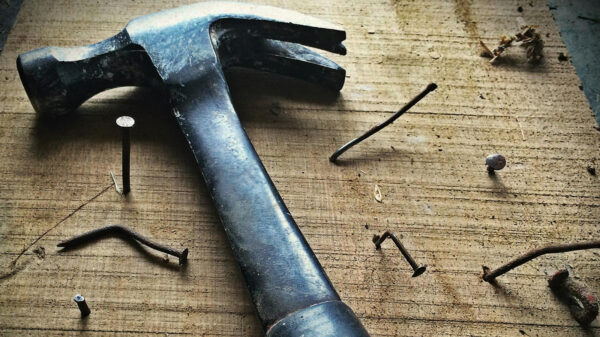


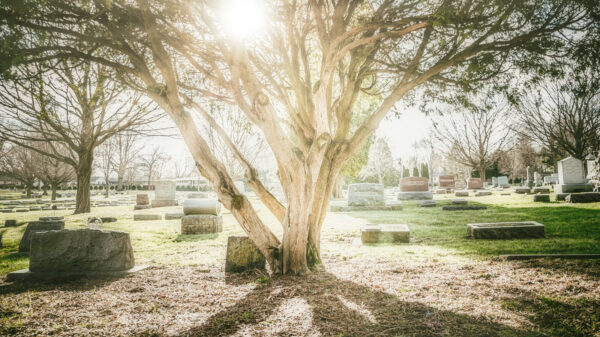


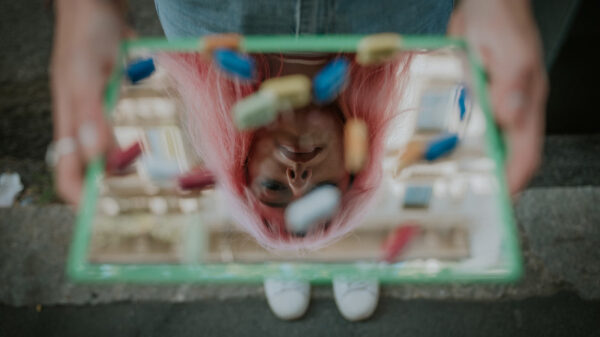
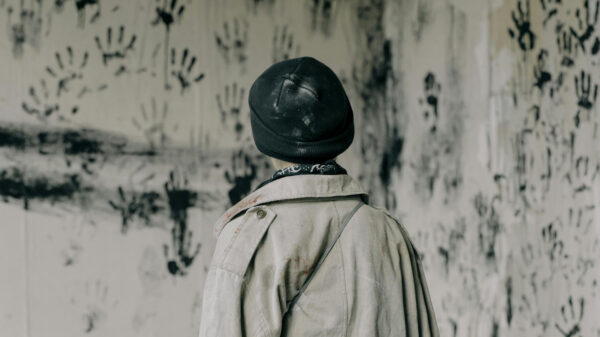




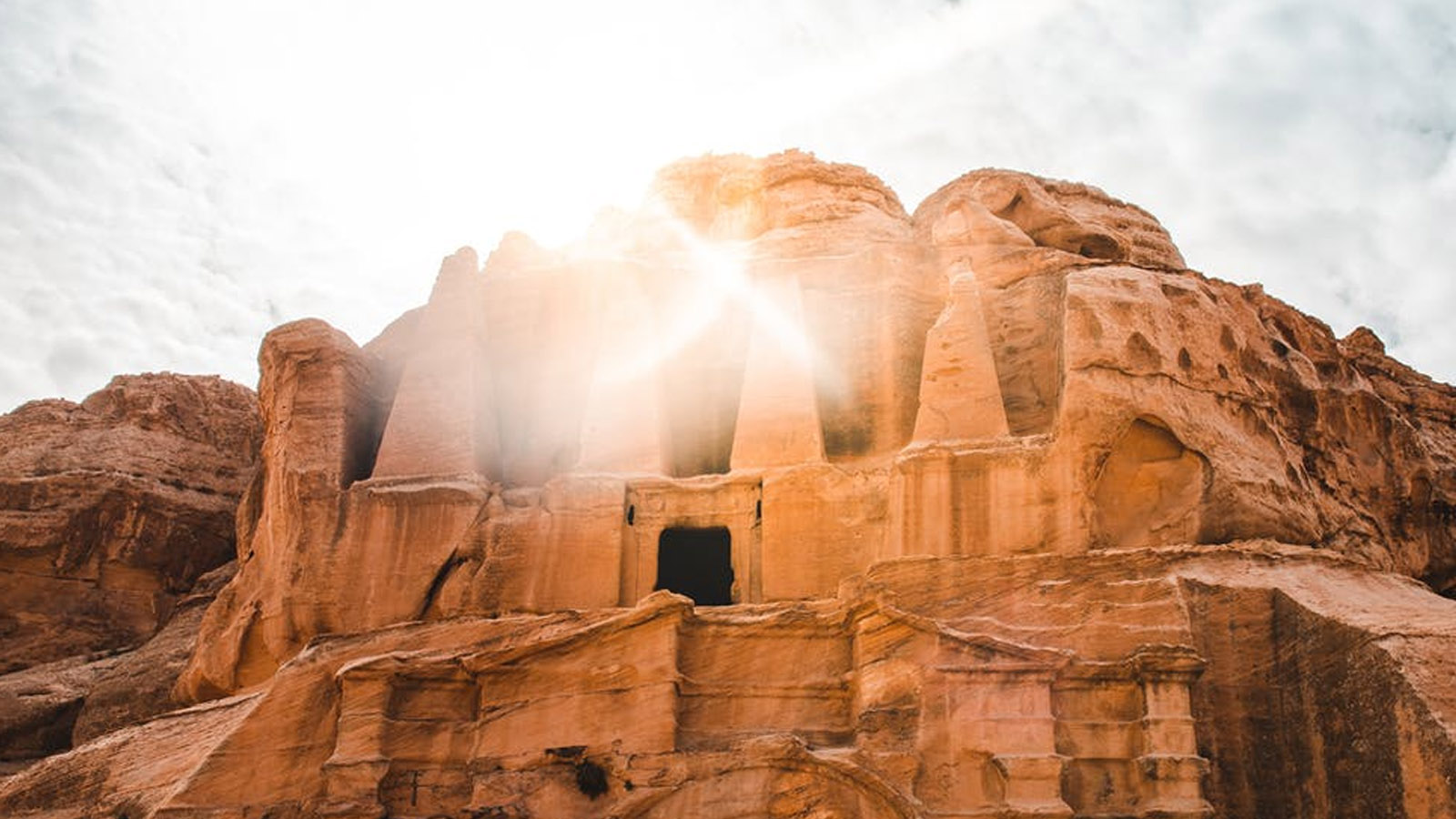








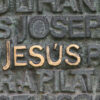







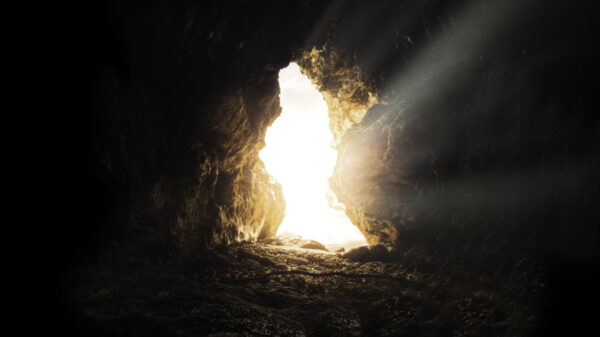
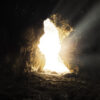



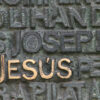

Rebecca Pickett
April 15, 2021 at 1:26 pm
Typo – “bee” instead of “been”
“The contents of the tomb have simply bee unimpressive to the experts who know the context and history of the are…”
Just a heads up so it can be corrected.
Paul B.
April 15, 2021 at 7:50 pm
James Cameron’s remark about DNA testing being expensive is laughable considering that by 2007 he was already a very, very wealthy individual.
The tests likely WERE performed and found no correlations that would support their farcical theory.
John doe
December 13, 2021 at 8:46 pm
It should be noted though that even if it were proven to be Jesus’s burial tomb,that doesn’t necessarily refute Jesus resurrection. None of the ossuaries contain bone remains.Its possible somebody went ahead and made an ossuary for Jesus without having his physical remains. In fact there is a claim that proof of his resurrection was found at the burial tomb:https://www.express.co.uk/news/weird/1266960/bible-news-jesus-christ-resurrection-jonah-whale-old-testament-god-proof-spt
Joseph Davidson
April 17, 2022 at 2:12 am
There were bones in those ossuaries, they were removed and reburried. The authorities did not let them investigate further with the second tomb or more dna testing fearing something… Let the truth be told. Please.
Their argument is, leave the dead in peace. But they have long ascended to heaven. Weird religion
Jesse
May 28, 2022 at 3:22 pm
Except for the fact that James Cameron himself said that it was too expensive, not that people wouldn’t let him. Try and be somewhat objective.
James Lowther
August 26, 2022 at 11:53 pm
Jesse, not quite sure what your point is. As far as ossuaries and remains found elsewhere in Israel from antiquity, it has long been the practice that after an examination they are reinterred elsewhere in an undisclosed location. This is due in large part to assuage the sensitivities of the Orthodox Jewish population, who object strenuously when it is learned that such remains are disturbed.
Jesse
May 28, 2022 at 3:27 pm
Also, if the apostles were trying to cover it up, why would they have marked the ossuaries with Jesus’ name on it. With all the other money put into this, they would have definitely done a DNA analysis on everything available to try and discredit the Gospels.
Shirley
April 16, 2022 at 4:37 pm
Maybe the resurrection was spiritual rather than “resusitation
Carol A Billeck
August 12, 2022 at 8:12 pm
Couldn’t Cameron have paid for the tests himself he.is at least a millionaire look at how much his movies made
James Lowther
August 27, 2022 at 12:29 am
The article cites a Tal Ham as an expert on names in first century Jewish and Christian history. Could this rather be Tal Ilan, Ph.D. from Hebrew University of Jerusalem and current professor of Jewish Studies at the Free University of Berlin?
Maggie
May 25, 2023 at 7:29 am
Have you considered the passages in John and Luke that suggest Jesus was not even laid in a tomb by his family?
John 19:38-40,After these things Joseph of Arimathea, who was a disciple of Jesus, but secretly for fear of the Jews, asked Pilate that he might take away the body of Jesus, and Pilate gave him permission. So he came and took away his body. Nicodemus also, who earlier had come to Jesus by night, came bringing a mixture of myrrh and aloes, about seventy-five pounds in weight. So they took the body of Jesus and bound it in linen cloths with the spices, as is the burial custom of the Jews.
Matthew 27:57-60, 57 When it was evening, there came a rich man from Arimathea, named Joseph, who also was a disciple of Jesus. He went to Pilate and asked for the body of Jesus. Then Pilate ordered it to be given to him. And Joseph took the body and wrapped it in a clean linen shroud and laid it in his own new tomb, which he had cut in the rock. And he rolled a great stone to the entrance of the tomb and went away.
These seem to suggest it would have been a higher class tomb, or in an unexpected place, for Joseph was a rich man.
Melissa Losure
May 30, 2023 at 12:08 pm
Hi, any response would be so much appreciated. I am really struggling with this. I didn’t think there were any bones in the ossuaries but recently read that Charles Pellegrino found a fragment of a metatarsal in the Jesus ossuary as well as fiber fragments, likely from 2 different shrouds, and there was some sort of purple dyed horse hair…. I have talked to a few friends about this and they are not bothered in the least, whereas it’s causing me so much anxiety. What are your thoughts? )I was struggling with the idea of this tomb since I found out about it a few months ago). I’d love any encouragement or insight.
Melissa
June 2, 2023 at 4:06 am
I meant to say metacarpal, not metatarsal.
Brian
July 20, 2023 at 9:41 pm
I watched this movie The Lost Tomb of Jesus back in the day and I was impressed by it, being a non believer. Then I saw people calling it Pseudoscience. I couldn’t understand why they couldn’t just examine the bones of “Jesus” to see if he was crucified. After many years I am reading this and understanding the controversy better. There are no bones to study I see. Therefore there is no “greatest relic ever.” And also this informed me more about the “DaVinci Code” stuff of the Gnostic Gospels, they never actually said they were married. This mystery is solved for me.
Brian
July 20, 2023 at 10:55 pm
… So I guess I’ve been wondering about this for 16 years, since the movie came out on the Discovery Channel 2007. Kind of sad, now that I see there is nothing too it. Great article.